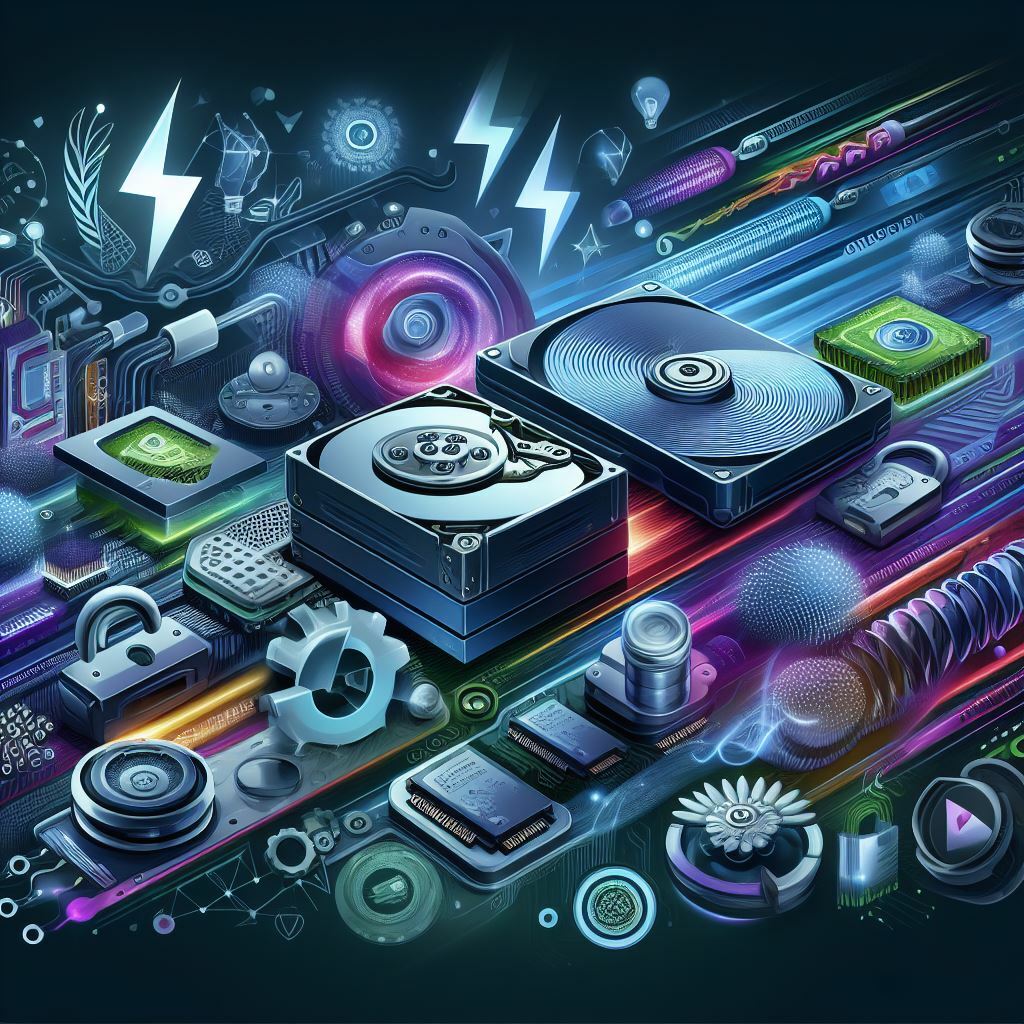Data storage solutions have undergone significant transformations to keep pace with the ever-increasing demands for speed, capacity, and reliability. Solid-state drives (SSDs) have revolutionized the storage industry, offering superior performance and durability compared to traditional hard disk drives (HDDs).
However, as data volumes continue to grow exponentially and the need for faster access becomes paramount, researchers and industry leaders are already exploring the next frontier of data storage technologies. In this article, we will delve into the cutting-edge innovations that are poised to shape the future of data storage beyond SSDs.
The Limitations of SSDs
While SSDs have undoubtedly transformed the storage landscape, they are not without their limitations. One of the primary challenges facing SSDs is the finite number of write cycles they can endure before experiencing performance degradation and potential failure. This limitation is due to the inherent characteristics of NAND flash memory, which forms the foundation of SSDs. As the demand for higher storage densities and faster write speeds increases, the endurance and reliability of SSDs become critical concerns.
Moreover, SSDs face scalability challenges as data centers and enterprise environments grapple with the explosive growth of data. The cost per gigabyte of SSDs remains higher compared to HDDs, making them less economically viable for storing massive amounts of data. As a result, researchers and industry leaders are actively exploring alternative storage technologies that can overcome these limitations and provide a more sustainable and cost-effective solution for the future.
Emerging Storage Technologies
3D XPoint Memory
One of the most promising innovations in data storage is 3D XPoint memory, a non-volatile memory technology jointly developed by two leading technology companies. 3D XPoint memory combines the speed and endurance of DRAM with the non-volatility and density of NAND flash, offering a significant leap in performance and durability. This technology enables faster data access, lower latency, and higher write endurance compared to traditional SSDs. 3D XPoint memory has the potential to bridge the gap between main memory and storage, enabling new possibilities for data-intensive applications and real-time analytics.
Phase-Change Memory (PCM)
PCM is another emerging storage technology that holds great promise. PCM leverages the properties of chalcogenide glass, which can switch between amorphous and crystalline states, representing binary data. PCM offers several advantages over NAND flash, including higher write endurance, faster read and write speeds, and lower power consumption. Additionally, it has the potential for multi-level cell (MLC) storage, enabling higher storage densities. While PCM is still in the early stages of development, it has the potential to become a viable alternative to SSDs in the future.
Magnetoresistive Random-Access Memory (MRAM)
MRAM is a non-volatile memory technology that uses magnetic states to store data. It offers several advantages over NAND flash and DRAM, including high speed, low latency, and unlimited endurance. It's particularly well-suited for applications that require frequent data writes and low power consumption, such as internet of things (IoT) devices and edge computing. As this technology continues to mature and become more cost-effective, it has the potential to compete with SSDs in certain application domains.
DNA Data Storage
While still in the realm of research, DNA data storage has emerged as a fascinating and promising approach to long-term data preservation. DNA, the building block of life, has an incredible storage density and longevity, making it an attractive medium for archival storage. Researchers have successfully demonstrated the ability to encode and retrieve digital data in DNA strands, offering the potential for storing massive amounts of data in a compact and durable form. Although DNA data storage is currently limited by its high cost and slow read/write speeds, ongoing research and advancements in biotechnology may make it a viable option for certain niche applications in the future.

The Role of Software and Intelligent Storage Management
As new storage technologies emerge, the role of software and intelligent storage management becomes increasingly crucial. Innovative software solutions are being developed to optimize data placement, enhance performance, and ensure data integrity across heterogeneous storage systems. These solutions leverage artificial intelligence and machine learning algorithms to automatically tier data based on access patterns, performance requirements, and cost considerations.
Intelligent storage management systems can dynamically allocate data across different storage tiers, including SSDs, HDDs, and emerging storage technologies, to maximize performance and cost-efficiency. By analyzing data usage patterns and predicting future demands, these systems can proactively move data to the most appropriate storage tier, ensuring optimal performance and reducing storage costs.
Moreover, software-defined storage (SDS) architectures are gaining prominence, enabling greater flexibility, scalability, and agility in managing storage resources. SDS decouples storage software from the underlying hardware, allowing organizations to create virtualized storage pools that can be easily provisioned, monitored, and managed. This approach enables seamless integration of new storage technologies, such as 3D XPoint memory or PCM, into existing storage infrastructures.
Conclusion
The future of data storage lies beyond the realm of SSDs, with emerging technologies such as 3D XPoint memory, PCM, MRAM, and even DNA data storage showing immense potential. As data volumes continue to grow exponentially and the demands for faster access and higher reliability intensify, these innovative storage solutions offer the promise of overcoming the limitations of current technologies. However, the adoption of these new storage technologies will require a holistic approach that encompasses not only hardware advancements but also intelligent software solutions and storage management strategies. By leveraging the power of artificial intelligence, machine learning, and software-defined storage, organizations can optimize data placement, enhance performance, and ensure cost-efficiency across heterogeneous storage environments.
As IT professionals and business leaders, it is crucial to stay informed about the latest developments in data storage technologies and assess their potential impact on your organization's storage strategies. By embracing innovation and adopting a forward-looking approach, you can position your organization to harness the benefits of these emerging storage solutions and stay ahead in the rapidly evolving digital landscape.
